Chemical Types

What are the different types of fire extinguishers ?
This text provides a comprehensive guide to the various types of fire extinguishers available, each designed for specific classes of fire. It includes detailed descriptions and pros & cons of water, foam, carbon dioxide (CO2), dry chemical, wet chemical, pre-action wet chemical, and clean agent fire extinguishers, emphasizing their suitability for different types of fires such as class A, B, C, and K. The text concludes by highlighting the importance of choosing the right type of extinguisher based on potential fire hazards in one's environment.
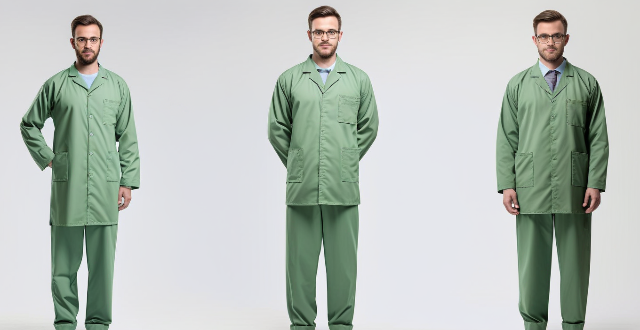
How do hazmat suits provide protection against chemical exposure ?
Hazmat suits, also known as chemical protective clothing or chemical resistant suits, are specialized garments designed to protect wearers from hazardous materials. These suits offer a high level of protection against chemical exposure by creating a barrier between the wearer and the environment. The key features of hazmat suits include their material, design, breathability, and comfort. The article discusses how hazmat suits provide protection against chemical exposure in detail, including the levels of protection offered by different types of suits.

What are the best practices for chemical protection in a laboratory setting ?
The text provides best practices for chemical protection in a laboratory setting, including wearing appropriate personal protective equipment, proper storage and handling of chemicals, using proper ventilation, having a spill response plan, disposing of waste properly, and staying informed and trained. These practices are crucial to ensure the safety of individuals working with hazardous chemicals in a lab environment.

How often should chemical protective gear be replaced or maintained ?
Chemical protective gear is essential for workers exposed to hazardous chemicals. The frequency of replacement or maintenance depends on the type of gear, level of exposure, and manufacturer's recommendations. Regular visual inspections and testing are crucial to ensure that the gear remains effective and safe. By following the manufacturer's guidelines, workers can minimize their risk of exposure to hazardous chemicals and protect their health and well-being.

How does PPE protect against chemical exposure in industrial settings ?
In industrial environments, workers are often exposed to hazardous chemicals that can pose significant health risks. Personal Protective Equipment (PPE) plays a crucial role in safeguarding these workers from potential harm. This article delves into the various types of PPE and how they protect against chemical exposure. Types of PPE for Chemical Protection include respiratory protection such as filtering facepiece respirators, powered air-purifying respirators, and self-contained breathing apparatuses; skin and eye protection like chemical-resistant gloves, aprons and suits, and goggles and face shields; and foot protection like chemical-resistant boots. PPE works against chemicals by forming a physical barrier between the worker and the chemical, absorbing or adsorbing chemicals before they reach the user, and isolating the user completely from the external environment. Best practices for using PPE include ensuring proper fit and comfort, regular inspection and maintenance, and comprehensive training and education on how to use PPE effectively. The correct use of PPE is essential for the safety of workers in industries where chemical exposure is a risk. Employers must ensure that appropriate PPE is provided, maintained, and used correctly to create a safer work environment.

What is the role of respirators in chemical protection, and how are they classified ?
Respirators play a crucial role in chemical protection by filtering out harmful particles and chemicals from the air. They are designed to protect workers from inhaling toxic substances, such as gases, vapors, and particulate matter, that may be present in their work environment. Respirators are essential for ensuring worker safety and preventing respiratory diseases caused by exposure to hazardous chemicals. Respirators can be classified into two main categories based on their design and function: air-purifying respirators (APRs) and atmosphere-supplying respirators (ASRs). APRs remove contaminants from the air before it is inhaled, while ASRs provide clean air from an external source through a hose or pipeline. When selecting a respirator for chemical protection, several factors must be considered, including the type of hazard, level of protection required, fit and comfort, and maintenance and care. By understanding the different types of respirators and selecting the appropriate one based on the specific hazard, employers can help ensure the safety and health of their employees.

What are the different types of protective clothing available ?
Protective clothing is essential in various industries and environments to ensure the safety and well-being of individuals. It is designed to protect against hazards such as chemicals, biological agents, radiation, heat, cold, electrical shocks, and physical injuries. There are different types of protective clothing available, including chemical protective clothing, biological protective clothing, radiation protective clothing, thermal protective clothing, electrical protective clothing, and physical protective clothing. Each type of protective clothing is designed to protect against specific hazards and includes a range of garments and accessories.

What types of chemicals require specialized personal protective equipment (PPE) ?
When working with hazardous chemicals, it is crucialWhen working with hazardous chemicals, it is crucial protective equipment (PPE) it is crucial to use the appropriate personal protective equipment (PPE) to ensure safety and prevent exposure. Here are some types of chemicals that require specialized PPE: Corrosive Chemicals: When handling corrosive chemicals, wear chemical-resistant gloves, aprons or gowns, safety goggles or face shields, and respiratory protection if necessary. Toxic Chemicals: When handling toxic chemicals, wear nitrile or chemical-resistant gloves, lab coats or coveralls, safety goggles or face shields, and respiratory protection depending on the type of toxic chemical. Flammable Chemicals: When handling flammable chemicals, wear flame-resistant clothing, gloves made from materials like nitrile or neoprene, safety goggles or face shields, and respiratory protection if necessary. Radioactive Chemicals: When handling radioactive chemicals, wear lead aprons or shields, gloves made from materials like latex or vinyl, safety goggles or face shields, and respiratory protection if necessary.
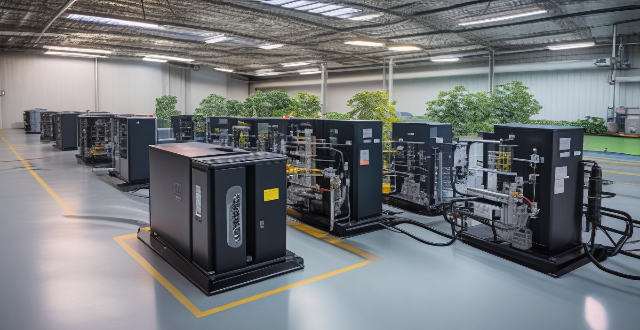
How do flow batteries compare to traditional chemical batteries ?
Flow batteries and traditional chemical batteries are both used for energy storage, but differ in aspects such as energy storage mechanism, power and energy density, lifespan and maintenance, and cost and scalability. Traditional chemical batteries store energy through chemical reactions within cells and have a fixed capacity, while flow batteries use external tanks of electrolyte solutions and have adjustable capacity. Traditional chemical batteries can deliver high power output per unit weight or volume and have moderate energy density, while flow batteries typically have lower power density but higher energy density. Traditional chemical batteries have a limited number of charge and discharge cycles before performance degrades and require regular maintenance, while flow batteries can undergo a larger number of cycles without significant degradation and require less maintenance. Traditional chemical batteries often have higher upfront costs and limited scalability, while flow batteries generally have lower upfront costs and offer more flexibility in scaling up. The choice between the two depends on the specific requirements of the energy storage application.

Can you explain the different types of PPE and their uses ?
Personal Protective Equipment (PPE) is a type of equipment worn to minimize the risk of injury or illness in the workplace. It can be categorized into different types based on the level of protection they offer and the specific hazards they are designed to protect against. Here are some common types of PPE and their uses: - Head Protection: Hard Hats, Safety Goggles, Face Shields - Respiratory Protection: Dust Masks, Respirators - Hand Protection: Gloves, Mittens - Foot Protection: Safety Shoes, Boots - Body Protection: Aprons, Coveralls, High-Visibility Clothing - Hearing Protection: Earplugs, Earmuffs

Can you explain the different levels of chemical resistance in protective clothing ?
Chemical resistance is a crucial aspect of protective clothing, especially for those working in hazardous environments. The level of chemical resistance required depends on the type and concentration of chemicals present in the work area. Here, we will discuss the different levels of chemical resistance in protective clothing: 1. Level A: Highest Level of Protection 2. Level B: Intermediate Level of Protection 3. Level C: Lower Level of Protection 4. Level D: Basic Protection

In what scenarios is it necessary to use chemical protective measures in an industrial setting ?
Industrial settings often require chemical protective measures to ensure worker safety. These scenarios include handling hazardous chemicals, working in confined spaces, performing maintenance on chemical process equipment, disposing of hazardous waste, and emergency response to chemical incidents. Workers must wear appropriate personal protective equipment (PPE) such as gloves, aprons, goggles, and respiratory protection devices to prevent exposure to harmful chemicals. Examples of these scenarios include manufacturing processes involving strong acids or bases, tank cleaning in the petrochemical industry, repairing valves or pipes in chemical processing plants, disposal of chemical waste at landfill sites, and firefighting and rescue operations during chemical fires or explosions. By implementing these chemical protective measures in relevant industrial scenarios, employers can help safeguard their employees from potential health hazards associated with chemical exposure.

Can you provide examples of different types of ecosystem services ?
The text provides a detailed summary of the four main types of ecosystem services, namely supporting, regulating, provisioning, and cultural services. Supporting services form the foundation for all other services and include nutrient cycling, soil formation, and primary production. Regulating services control ecological processes such as climate regulation, disease regulation, and water purification. Provisioning services provide direct material benefits to humans, including food, freshwater, timber, and medicine. Cultural services encompass non-material benefits that contribute to human well-being, such as recreation, spiritual enrichment, and educational opportunities. The text emphasizes the importance of understanding these different types of ecosystem services to appreciate the value of nature and the significance of conservation efforts.

What is the importance of understanding material safety data sheets (MSDS) in chemical handling and protection ?
The text discusses the importance of understanding Material Safety Data Sheets (MSDS) in chemical handling and protection. It explains what an MSDS is, its significance for health and safety, compliance with regulations, environmental protection, and risk management. The article emphasizes that understanding MSDS is crucial for workers and employers to ensure a safe and healthy work environment.

What are the different types of preschool programs available ?
Preschool programs are designed to prepare young children for kindergarten and beyond. There are several types of preschool programs available, each with its own unique approach and focus. The most common types of preschool programs include Montessori, Waldorf, Reggio Emilia, High Scope, Play-Based, Head Start, and Co-op/Parent Participation. Each program has its own key features and benefits. When choosing a preschool program for your child, it's essential to consider your family's needs, values, and preferences to find the best fit for your little one's early education journey.

Are hub motors more expensive than other types of motors ?
Hub motors are generally more expensive than other types of motors, such as brushed DC motors and induction motors. However, they offer several advantages over these motor types, including their compact size, high efficiency, and low maintenance requirements. Brushless DC motors are generally less expensive than hub motors but still offer many of the same benefits. The choice between these motor types will depend on the specific needs and budget of the vehicle manufacturer or end-user.

How can individuals contribute to the safe management of hazardous chemicals in their community ?
The article outlines various ways individuals can contribute to the safe management of hazardous chemicals in their community. It emphasizes the importance of education, staying informed, taking action, prevention and preparedness, and community collaboration. Individuals are encouraged to research common hazardous chemicals, identify potential health effects, monitor local news, attend public meetings, report leaks and spills, support strict regulations, participate in cleanup efforts, implement safe practices at home, create an emergency plan, build partnerships, and encourage transparency. By taking these steps, individuals can play a crucial role in ensuring the safe management of hazardous chemicals within their communities.

What are the different types of sensors used in environmental monitoring ?
Environmental monitoring involves the use of various sensors to collect data on different environmental parameters. These sensors include temperature sensors, humidity sensors, pressure sensors, light sensors, and chemical sensors. Temperature sensors measure the temperature of the environment and are crucial for monitoring weather patterns, climate change, and the impact of human activities on the environment. Humidity sensors measure the moisture content in the air and are essential for monitoring weather patterns, air quality, and the impact of human activities on the environment. Pressure sensors measure the force per unit area exerted by a fluid or gas and are crucial for monitoring weather patterns, air quality, and the impact of human activities on the environment. Light sensors measure the intensity and wavelength of light in the environment and are essential for monitoring solar radiation, atmospheric conditions, and the impact of human activities on the environment. Chemical sensors measure the presence and concentration of specific chemicals in the environment and are crucial for monitoring air and water quality, soil contamination, and the impact of human activities on the environment. Overall, these sensors help us understand the state of our environment and take necessary actions to protect it.
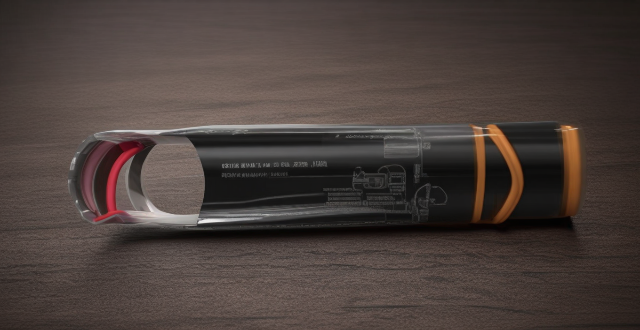
Can zinc-carbon batteries be used in all types of devices ?
Zinc-carbon batteries are versatile but not universally applicable due to voltage, current, chemical compatibility, and physical size constraints.

What kind of seasonings work well with different types of fish ?
This text provides a comprehensive guide to seasonings for various types of fish and shellfish, categorized by freshwater and saltwater species. It offers specific seasoning suggestions for each type of fish or shellfish, such as salmon, trout, catfish, tuna, mahi-mahi, sardines, anchovies, shrimp, lobster, crab, clams, mussels, and oysters. The suggested seasonings aim to enhance the natural flavors of the seafood while adding depth and complexity to the dishes.
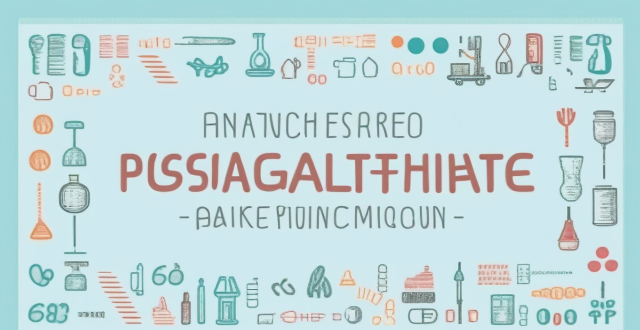
How can we manage and dispose of hazardous chemical waste in an environmentally friendly manner ?
The provided text discusses the importance of managing and disposing of hazardous chemical waste in an environmentally friendly manner. It outlines steps for identifying and classifying hazardous waste, proper storage and handling, safe transportation, treatment and disposal options, regulatory compliance, best practices for minimizing waste, and employee training and awareness. These guidelines help organizations effectively manage and dispose of hazardous chemical waste while complying with legal requirements and protecting public health and the environment.

Should governments prioritize environmental subsidy policies over other types of subsidies ?
The text discusses the pros and cons of prioritizing environmental subsidy policies over other types of subsidies, such as healthcare or education. The author argues that while environmental subsidies can help promote sustainable practices and reduce the negative impacts of human activities on the planet, other types of subsidies are also crucial for the well-being of society. The author suggests a balanced approach that considers both environmental sustainability and social welfare, including integrated policy making, targeted subsidies, public-private partnerships, and continuous evaluation.

What are some common types of emergencies and how should they be handled ?
Emergencies can occur at any time and place, often without warning. Knowing the types of emergencies and how to handle them is crucial for ensuring safety and minimizing harm. In this article, we will discuss some common types of emergencies and their appropriate handling methods. ## Natural Disasters Natural disasters are events caused by environmental factors that result in widespread damage and loss of life. Some common types of natural disasters include earthquakes, hurricanes, floods, wildfires, and tornadoes. When faced with a natural disaster, it is essential to stay calm, seek shelter, follow evacuation orders, have an emergency kit ready, and stay informed about the situation. ## Medical Emergencies Medical emergencies refer to situations where immediate medical attention is required to prevent serious harm or death. Some common types of medical emergencies include heart attacks, strokes, severe allergic reactions, severe bleeding, and choking. When dealing with a medical emergency, it is crucial to call for help, perform first aid if trained, use automated external defibrillators (AEDs) if available, do not move the victim unless necessary, and stay with the victim until help arrives. ## Fire Emergencies Fire emergencies involve uncontrolled fires that pose a threat to people and property. Some common types of fire emergencies include house fires, wildfires, car accidents involving fire, and industrial fires. When facing a fire emergency, it is important to activate fire alarms/alert others, evacuate safely through designated exits, call emergency services immediately, do not reenter burning buildings, and use fire extinguishers appropriately if trained and safe to do so. In conclusion, being prepared for emergencies is crucial for ensuring safety and minimizing harm. By understanding common types of emergencies and their appropriate handling methods, individuals can respond effectively in crisis situations. Remember to stay calm, act quickly, and follow proper procedures to protect yourself and others.
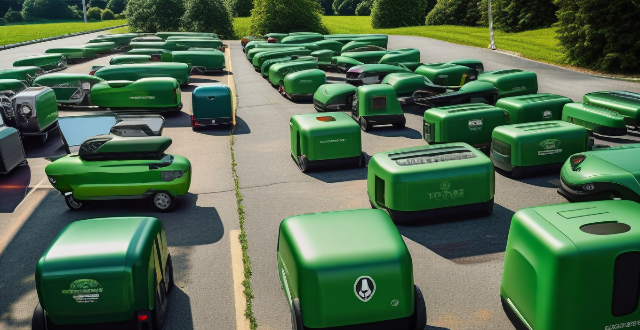
What is the current market share of CHEVs compared to other types of green vehicles ?
The market share of CHEVs compared to other types of green vehicles can be broken down into several categories, including hybrid electric vehicles (HEVs), plug-in hybrid electric vehicles (PHEVs), and battery electric vehicles (BEVs). HEVs are one of the most popular types of green vehicles on the market today, accounting for approximately 2.5 million units sold worldwide in 2020. PHEVs are similar to HEVs but have a larger battery pack that can be charged from an external power source, with global sales reaching around 1.3 million units in 2020. BEVs are fully electric vehicles that rely solely on batteries for power, with global sales reaching over 3 million units in 2020. When comparing CHEVs to other types of green vehicles, it is important to note that CHEVs fall under the category of HEVs. Therefore, the actual market share of CHEVs compared to other types of green vehicles would likely be much smaller than 2.5 million units sold worldwide in 2020.

How do celebrity mansions compare to other types of luxury real estate, such as penthouse apartments or beachfront properties ?
Celebrity mansions are often compared to other types of luxury real estate, such as penthouse apartments or beachfront properties. While all these properties share some common features, there are also significant differences between them. In this article, we will explore the similarities and differences between celebrity mansions and other types of luxury real estate.

What are the different types of radiation and how do they differ in terms of risk ?
This text discusses two main types of radiation: ionizing and non-ionizing, detailing their characteristics, examples, and potential risks. Ionizing radiation, which includes alpha particles, beta particles, gamma rays, X-rays, and neutrons, can damage living tissue and DNA, leading to cancer and other health issues. Non-ionizing radiation, such as ultraviolet light, visible light, microwaves, radio waves, and extremely low-frequency radiation (ELF), generally poses lower risks but can still cause harm with high levels of exposure. The text emphasizes the importance of managing exposure to both types of radiation to mitigate potential risks.

How do you properly dispose of chemicals to ensure safety and compliance with regulations ?
Proper disposal of chemicals is crucial for environmental and health safety. Identify the chemical, classify it as hazardous or non-hazardous, determine the appropriate disposal method, follow packaging and labeling guidelines, comply with regulations, consider alternative disposal methods, and train personnel on safety procedures to ensure safe and compliant disposal.